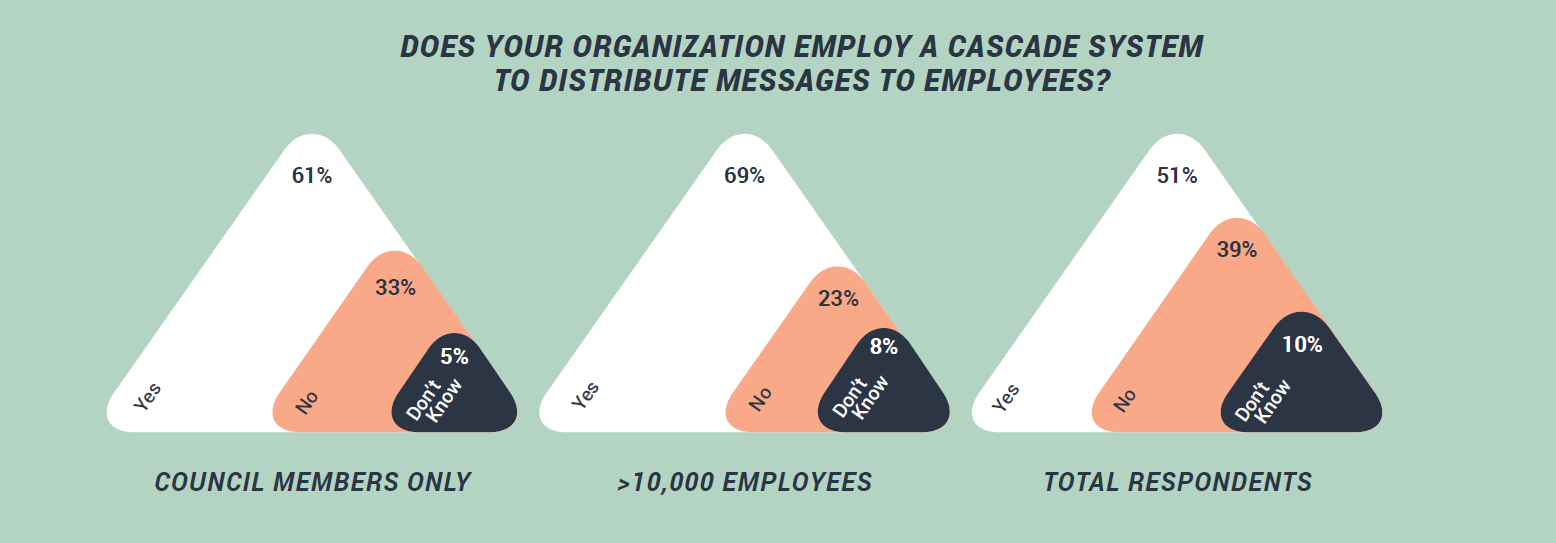The cascade is broken. Here’s one way to fix it.
While some comms pros are moving away from the cascade, it’s still a popular choice. Here’s one way to make it better – and to get buy-in from senior leadership.

We call it the cascade, the system by which information is passed from senior leaders to mid-level managers to supervisors to rank and file workers.
But sometimes it can resemble the playground game of telephone, as messages are filtered from person to person, subtly warping and changing each time.
The cascade has long been the go-to method of communication, especially within larger organizations. But according to Ragan’s 2022 Communications Benchmark survey, we’re beginning to see a shift.
While it’s still common, especially in large organizations, Communications Leadership Council members reported a 15-point drop year over year, while the biggest organizations — those with 10,000 or more employees — showed a 9-point decline.

Relatedly, 79% of respondents said that their manager communications strategies range from moderately to extremely challenging. Written responses as to why it’s so tricky range from managers being ‘too busy’, ‘too introverted’ and ‘too siloed’.
These insights suggest internal comms pros are in quite a quandary. You aren’t hiring managers, yet they’re often an essential part of your communications strategy. And the skills that good communicators need may not be the skills your managers are being hired for.
What’s a communicator to do?
What you always do: Take what you have to work with and refine the process to make it better.
Level up manager comms skills
You may already be following best practices for cascading information to manager, like providing them with talking points, making it clear where follow-up questions can be directed and reinforcing the messaging through other channels, including email, town halls or physical signage. You may know that the information flows best when it’s translated by managers who have strong relationships with their direct reports, instead of being delivered by someone without a personal tie and a level of trust.
But there’s only so much you can do when the ultimate communication lies in the hands of others.
This full post is available exclusively to members of the Communications Leadership Council. For more information or to join, click here.







